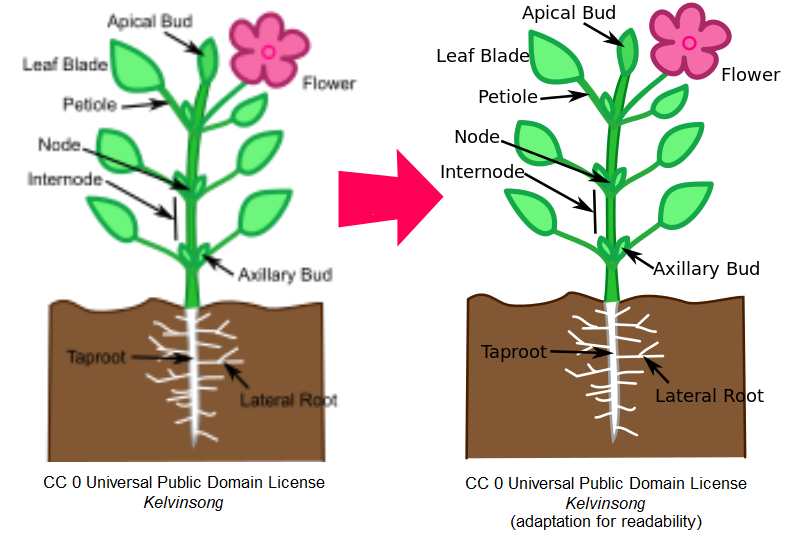Open Licensing
All OER are made available under some type of open license, a set of authorized permissions from the rightsholder of a work for any and all users. By assigning an open license to your work, you allow any user to exercise the rights allowed under the license, and cannot restrict reuse by certain individuals or parties without changing the license itself.
There are several different types of open licenses that can be applied to educational materials. A few of these licenses are described below:
- Creative Commons (CC) License: this type of license is the most popular. CC licenses are customizable copyright licenses that allow others to reuse, adapt, and re-publish content with few or no restrictions. They allow creators to explain in plain language how their works can be used by others.
- GNU Free Documentation License: a copyleft license that grants the right to copy, redistribute, and modify a resource. It requires all copies and derivatives to be available under the same license. Copies may be sold commercially, but the original document or source code must be made available to the user as well.
- Free Art License: The FAL “grants the right to freely copy, distribute, and transform creative works without infringing the author’s rights.” It is meant to be applied to artistic works, not documents.
Why Open Licenses?
Open licenses are an integral part of what makes an educational resource an OER. The adaptability and reusability of OER make it so that they are not just free to access, but also free for instructors who want to alter the materials for use in their course. For example, in the figure below an openly licensed image has been traced to make it more readable for users.

One of the tenets of OER laid out early on in the open education movement was the idea of the 5 Rs (originally the 4 Rs) introduced by David Wiley. These five attributes lay out what it means for something to be truly “open,” as the term is used in open education. The 5 Rs include:
- Retain: the right to make, own, and control copies of the content.
- Reuse: the right to use the content in a wide range of ways
- Revise: the right to adapt, adjust, modify, or alter the content itself
- Remix: the right to combine the original or revised content with other open content to create something new
- Redistribute: the right to share copies of the original content, your revisions, or your remixes with others
While the “redistribute” and “revise” rights are the most commonly exercised rights in open education, each of the five plays an important role in the utility of an open educational resource. For example, without the right to “remix” materials, an instructor who teaches an interdisciplinary course would not be able to combine two disparate OER into a new resource that more closely fits their needs.
CC Licenses
As we mentioned in the previous chapter, Creative Commons (CC) licenses allow you to explain, in plain language, how your creative works can be reused. These licenses act as explicit, standing permissions for all users.
Each of the CC licenses is made up of four main building blocks:
Attribution (BY): Proper attribution must be given to the original creator of the work whenever a portion of their work is reused or adapted. This includes a link to the original work, information about the author, and information about the original work’s license. (As in, “You can use my work, but only if you give me credit.”)
Share-Alike (SA): Iterations of the original work must be made available under the same license terms. (As in, “You can use my work, but only if you share your resulting product with the same permissions.”)
Non-Commercial (NC): The work cannot be sold at a profit or used for commercial means such as for-profit advertising. Copies of the work can be purchased in print and given away or sold at cost. (As in, “You can use my work, as long as you don’t use it to make money.”)
No Derivatives (ND): The work cannot be altered or “remixed.” Only identical copies of the work can be redistributed without additional permission from the creator. (As in, “You can use my work, but only if you use it in its entirety without making any changes.”)
When mixed and matched, they create six different licenses that grant different sets of permissions. Note that the No Derivatives and Share Alike components are incompatible and cannot be combined under one license.
We’ll do a deeper dive on pros and cons of the different CC licenses in Section 7.3: Licensing Your Resource.
Key Takeaways
- All OER are developed under a type of open license or set of authorized permissions from the rightsholder of a work for any and all users. Examples of open licensing include Creative Commons License, GNU Free Documentation License, and Free Art License.
- Open Licenses ensure that OER are not only free to access for students but free for modification by instructors who seek to utilize OER for their own courses.
This chapter was adapted from The OER Starter Kit by Abbey K. Elder, licensed CC BY 4.0 and The ABOER Starter Kit by Technologies in Education at the Faculty of Education, the University of Alberta, licensed CC BY 4.0.


